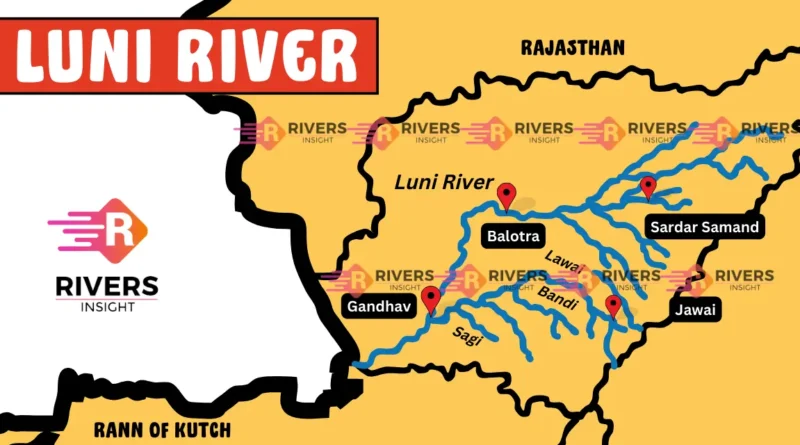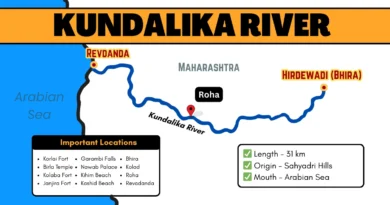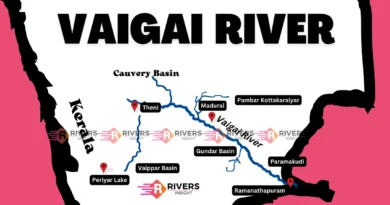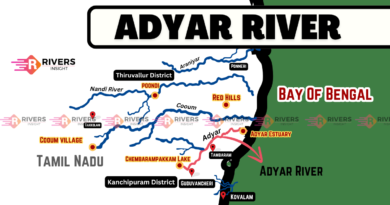Luni River – Overview with Map & Tributaries
The Luni River is the only salty river in India. It starts from the beautiful Aravalli Range in Rajasthan and runs about 495 kilometers through dry areas of Rajasthan and Gujarat. Even though it’s salty, it’s important for the people living nearby because it helps them with farming and keeps their traditions alive.
As the Luni River approaches Balotra in the Barmer district, it undergoes a distinct change: from freshwater to saline. This shift occurs because of the high salt content in the surrounding soil, marking a significant feature of the river’s journey.
This article will cover all the aspects of the Luni River including its origin, path, length, tributaries, and drainage basin. We aim to provide informative and engaging content for readers interested in India’s natural heritage.
| River | Luni |
| Length | 495 km |
| Origin | Aravalli Hills |
| Dam | Jaswant Sagar Dam |
Table of Contents
Geographical Features of Luni River
- Origin: Originating from the Naga hills near Ajmer in the Aravalli Range, the Luni River starts its journey southwestward, winding through different landscapes.
- Course: It flows through the districts of Nagaur, Pali, Jodhpur, Barmer, and Jalore in Rajasthan, passing hills, plains, and deserts, before reaching the vast Rann of Kutch in Gujarat.
- Length: The total length is approximately 495 kilometers.
- Tributaries: The Luni River is nourished by significant tributaries such as the Jawai, Sukri, Guhiya, Bandi (Hemawas), and Jojari rivers.
- Drainage Basin: Encompassing an area of approximately 32,879 square kilometers, the River basin serves as a crucial catchment area, collecting precipitation and sustaining the river’s vitality throughout its course.
Jaswant Sagar Dam
The Jaswant Sagar Dam, built in 1892 near Pichiyak hamlet in Rajasthan, is a crucial irrigation reservoir constructed by Maharaja Jaswant Singh of Jodhpur. Its primary function is to regulate the flow of the Luni River, ensuring a steady water supply for agricultural purposes throughout the year.
This dam is pivotal in mitigating the impact of droughts in the region, supporting agricultural productivity and sustaining livelihoods. Its strategic location and design make it a cornerstone of water management in Rajasthan’s arid landscape.
The Jaswant Sagar Dam remains an essential infrastructure, contributing significantly to the region’s agricultural prosperity and underscoring the importance of water management in sustaining livelihoods in arid environments.
More related articles:




